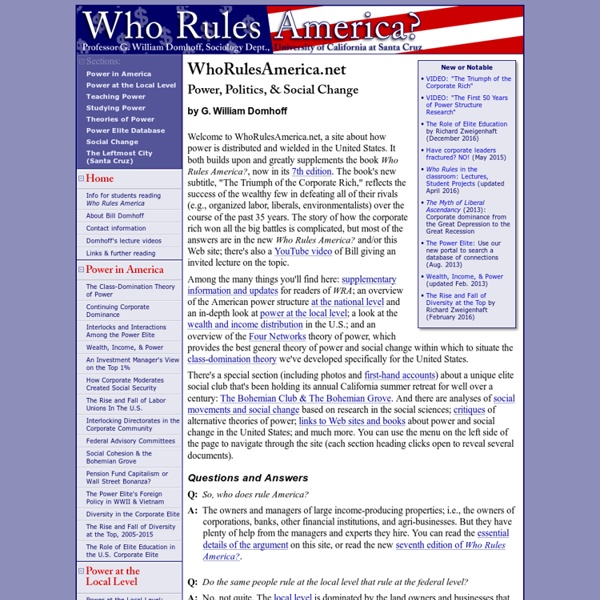Who Rules America? Power, Politics, & Social Change

God and the State
Written: February - March, 1871;Source: God and the State;Publisher: Mother Earth Publishing Association, New York © 1916;First Published: 1882 (Discovered posthumously by Carlo Cafiero and Elisée Reclus);Translated: Benjamin R. Tucker;Online Version: Anarchist Archives; Bakunin Reference Archive (marxists.org) 1999;Transcribed: Dana Ward;HTML Markup: Brian Baggins. Table of Contents: IntroductionChapter IChapter IIChapter IIIChapter IV Bakunin's most famous work, published in various lengths, at times ending mid-second section with the line "This is the sense in which we are really Anarchists. Originally titled "Dieu et l'état", Bakunin intended it to be part of the second portion to a larger work named "The Knouto-Germanic Empire and the Social Revolution" (Knouto-Germanic Empire is in reference to a treaty betwixt Russia and Germany at the time), but the work was never completed. What follows is a small collection of passages representative of the primary themes of the book:
Threatening the government officials of the United States
Threatening the government officials of the United States is a serious crime under federal law. Threatening the President of the United States is a Class D felony under 18 U.S.C. § 871, punishable by 5 years of imprisonment, that is investigated by the United States Secret Service. Threatening other officials is a Class C or D felony, usually carrying maximum penalties of 5 or 10 years under 18 U.S.C. § 875, 18 U.S.C. § 876 and other statutes, that is investigated by the Federal Bureau of Investigation. In determining what constitutes a true threat, the courts hold that what must be proved is that a reasonable recipient of the communication would consider it a threat under the circumstances. Incidence[edit] President[edit] Legislators[edit] The worst actual violence against Congressmen occurred in 1954 when four Puerto Rican nationalists shot up the House chamber, wounding five members.[19] Threats and intimidation directed against Congress are far more common. Other civil servants[edit]
Related:
Related:



